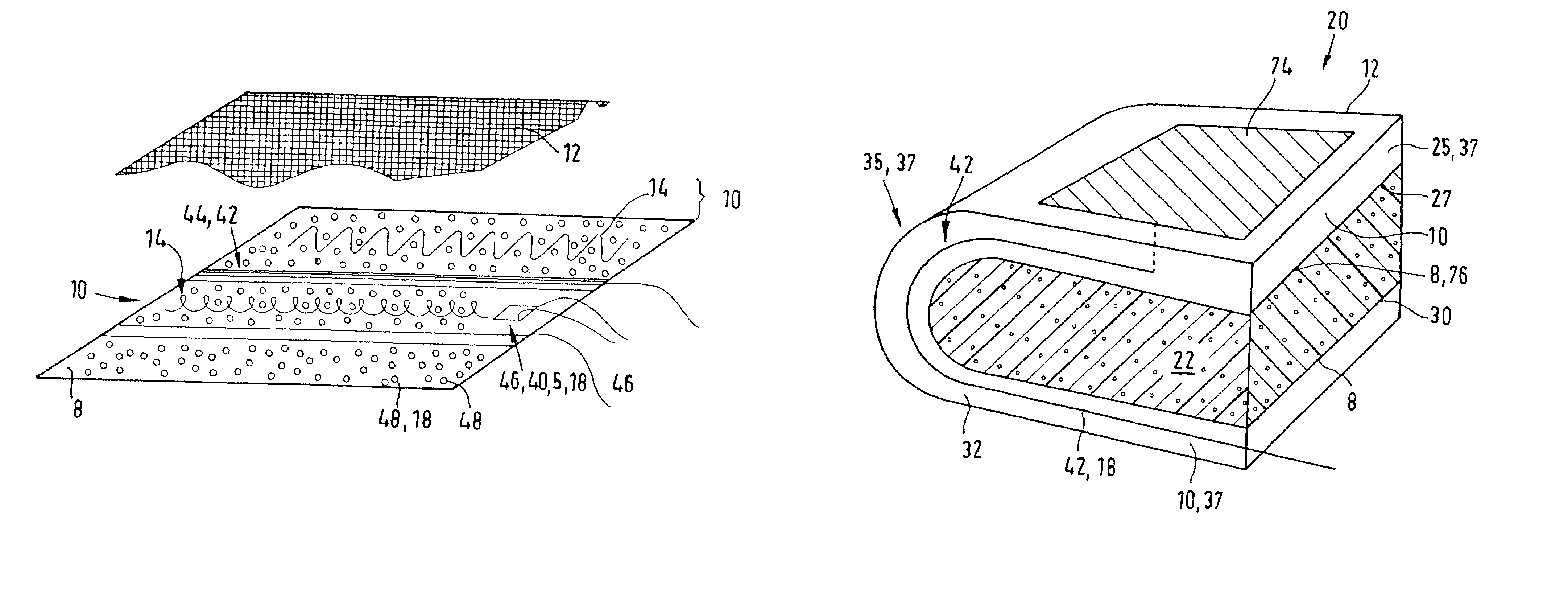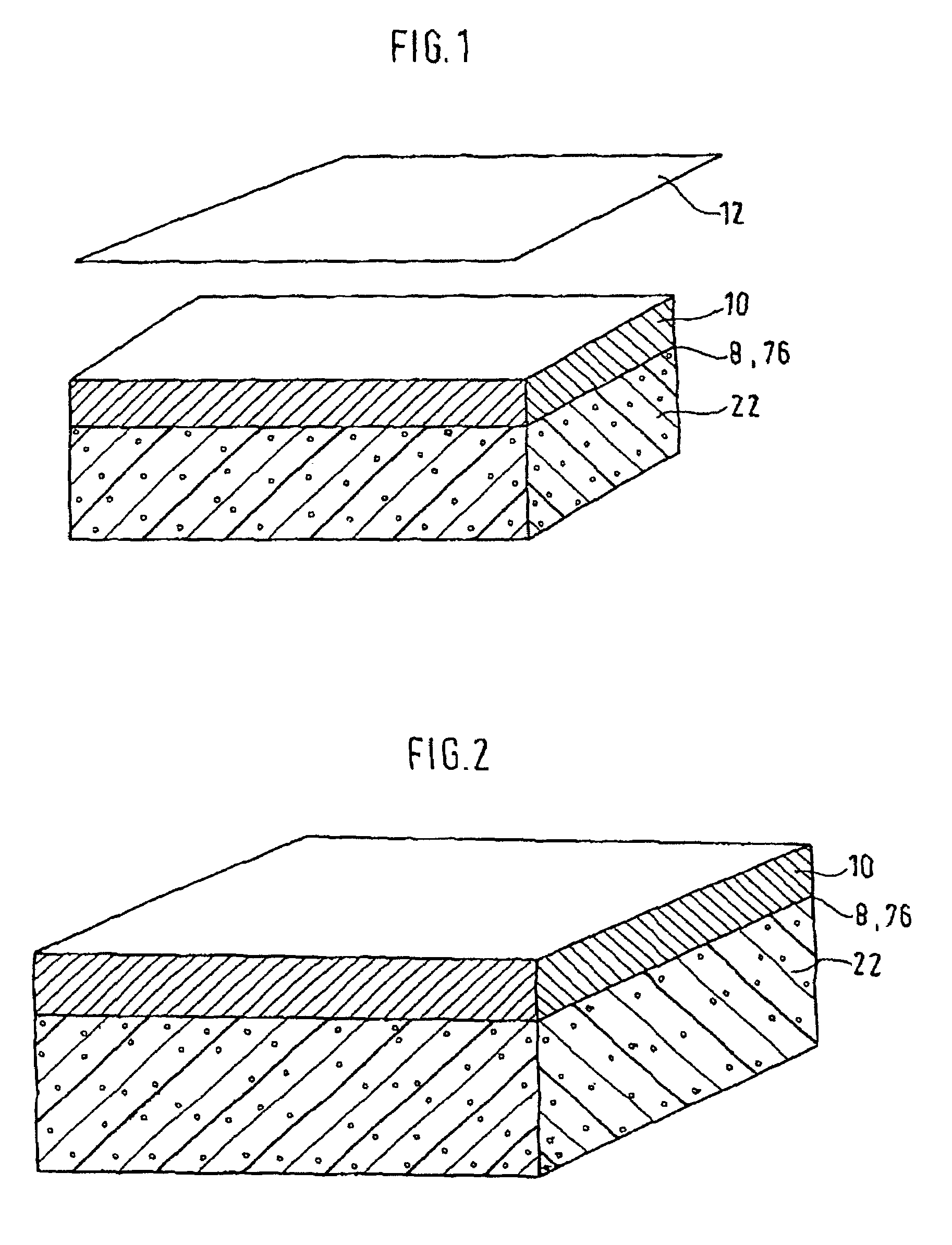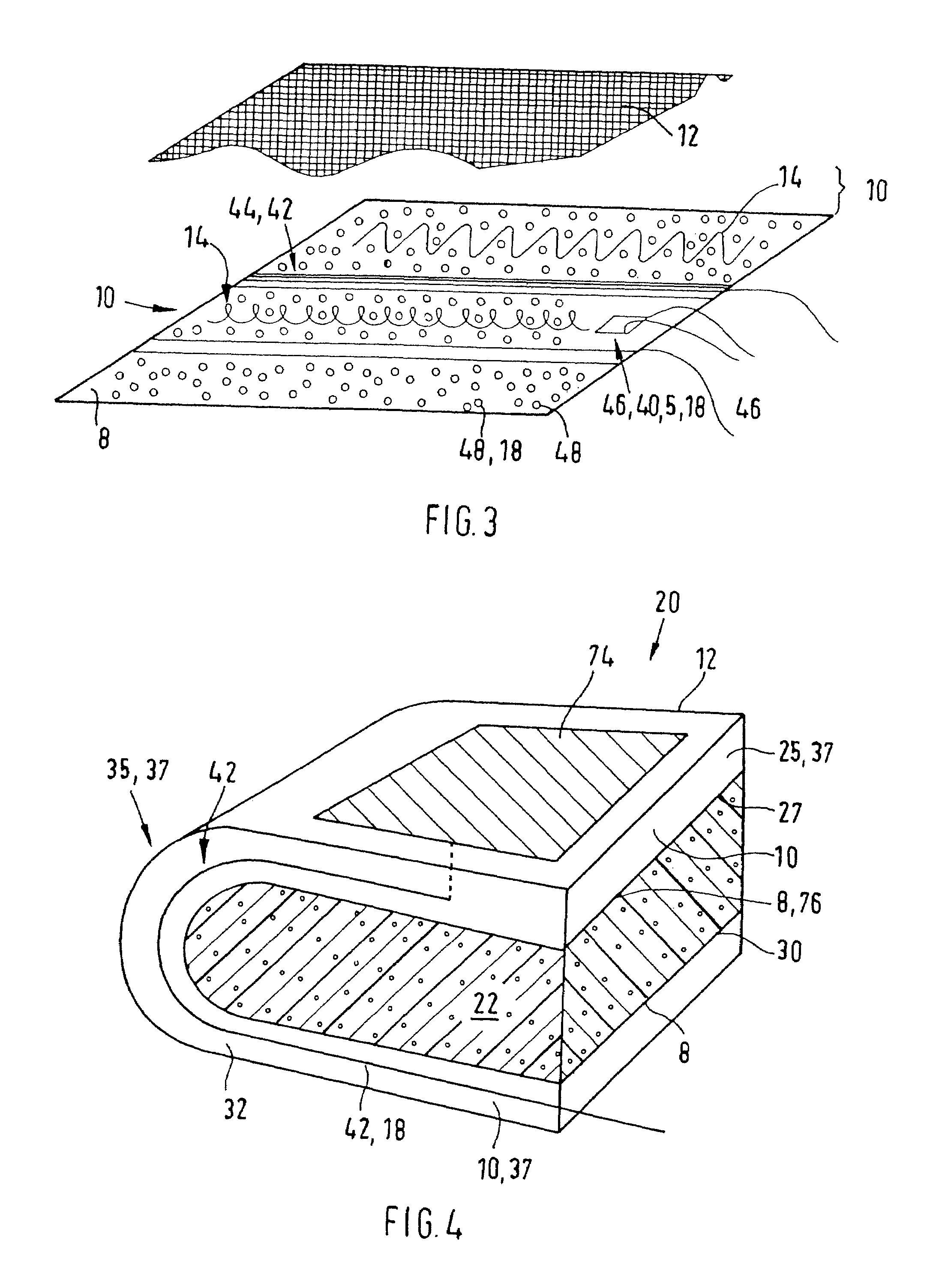Device for receiving functional elements
a functional element and device technology, applied in the direction of contraceptive devices, chairs, sofas, etc., can solve the problems of largely ineffective heating and relatively limited efficiency of such arrangements, and achieve the effect of improving the response characteristics of heating, increasing the efficiency of existing seat heating elements, and high-automatic manufacturing
- Summary
- Abstract
- Description
- Claims
- Application Information
AI Technical Summary
Benefits of technology
Problems solved by technology
Method used
Image
Examples
Embodiment Construction
[0059]FIG. 1 shows the basic structure of a device according to the invention for accommodating functional elements in schematic, perspective view, using the example of a cushion. The cushion shown as the composite component comprises a bottom cushion core 22 and a base layer 8 placed thereon and joined to the cushion core, which base layer is preferably designed as a layer 76 that is impermeable to liquids. Located on the relatively thin base layer 8 is an intermediate layer 10 that is applied thereto and covered with a cover layer 12. The same situation, but without the cover layer 12, is shown once again in FIG. 2.
[0060]The cushion core 22 can be made, for example, of polyurethane foam (resilient polyurethane foam) or, for example, of rubberized hair. The intermediate layer 10 that functions as a distribution layer is composed of a spacer material which is characterized by high air permeability both transverse and perpendicular to the component surface. Air can flow through the i...
PUM
 Login to View More
Login to View More Abstract
Description
Claims
Application Information
 Login to View More
Login to View More - R&D
- Intellectual Property
- Life Sciences
- Materials
- Tech Scout
- Unparalleled Data Quality
- Higher Quality Content
- 60% Fewer Hallucinations
Browse by: Latest US Patents, China's latest patents, Technical Efficacy Thesaurus, Application Domain, Technology Topic, Popular Technical Reports.
© 2025 PatSnap. All rights reserved.Legal|Privacy policy|Modern Slavery Act Transparency Statement|Sitemap|About US| Contact US: help@patsnap.com



